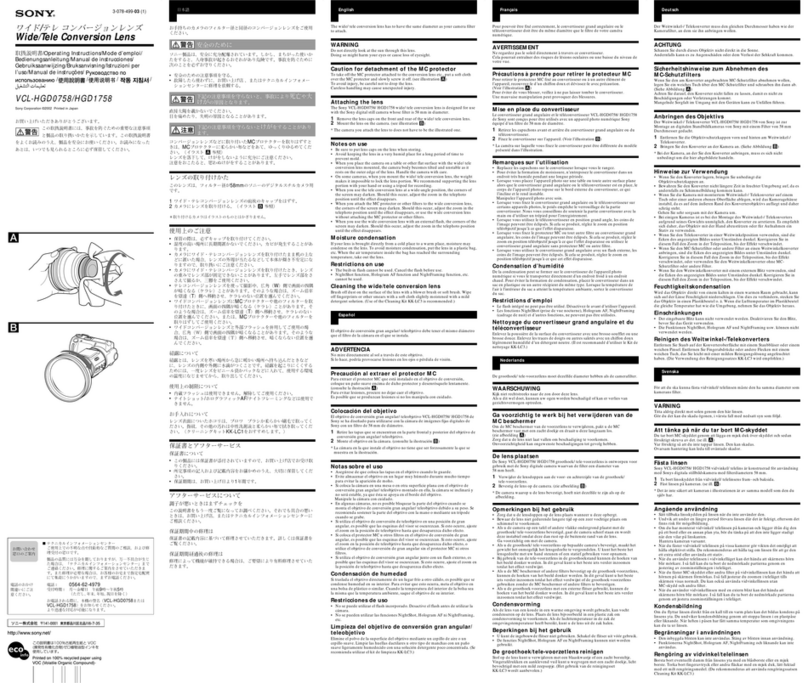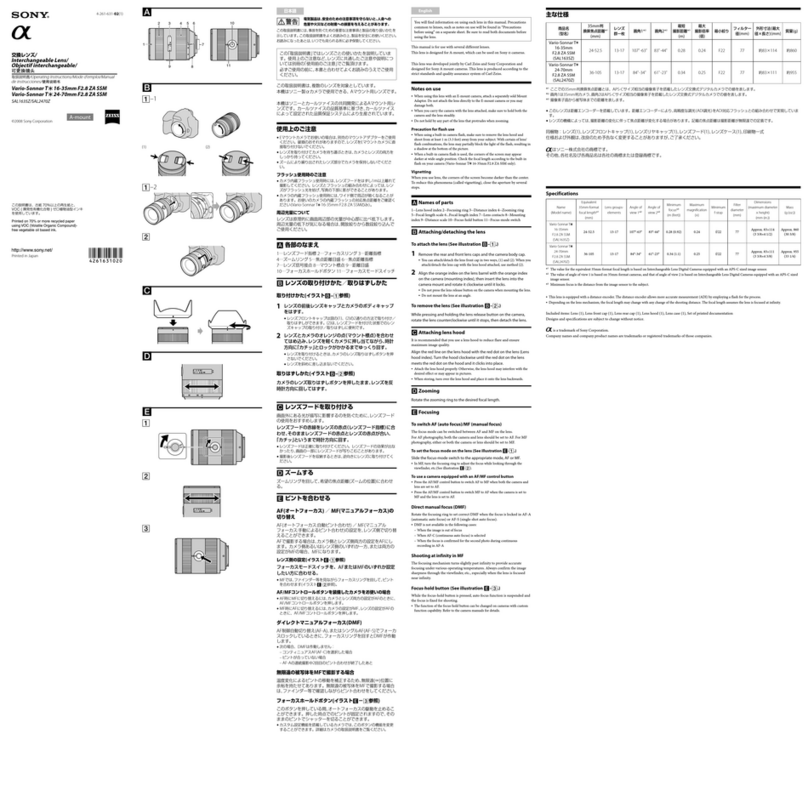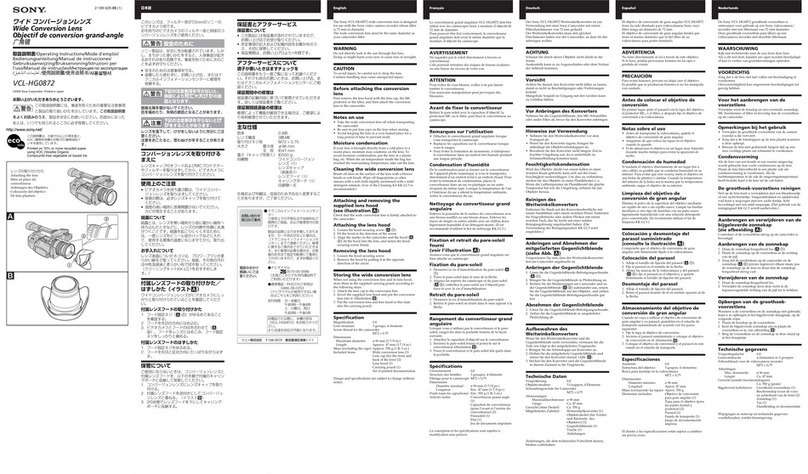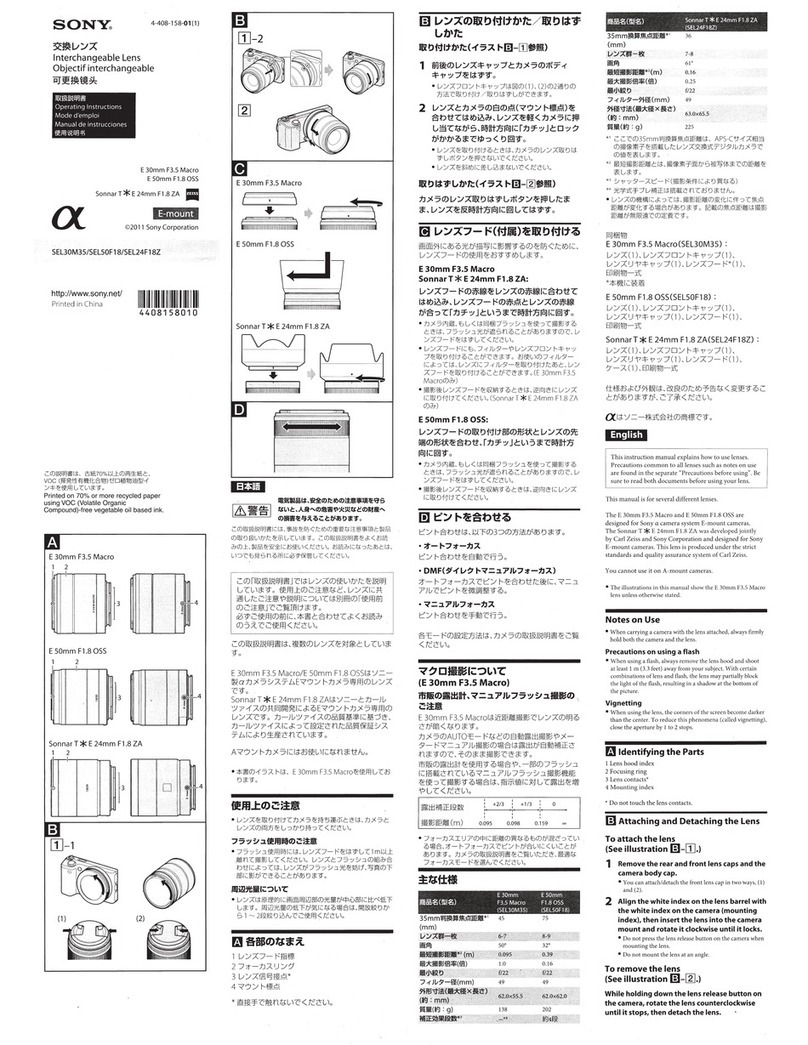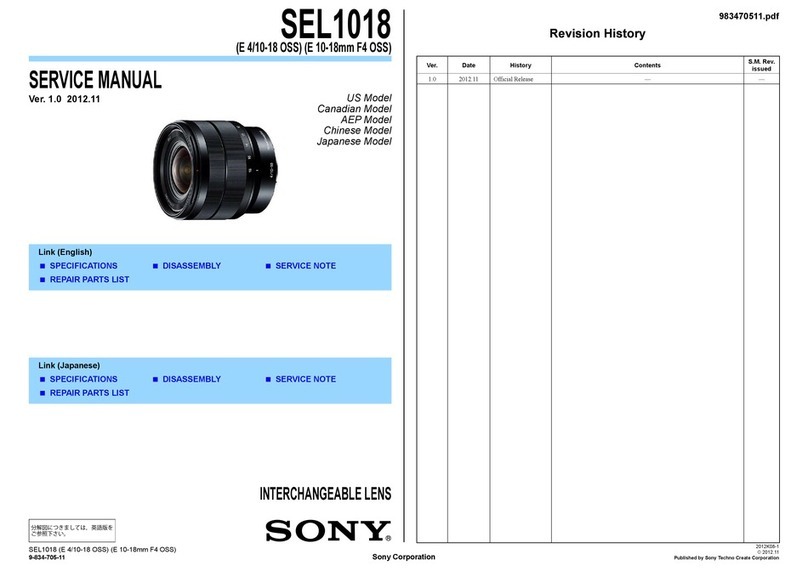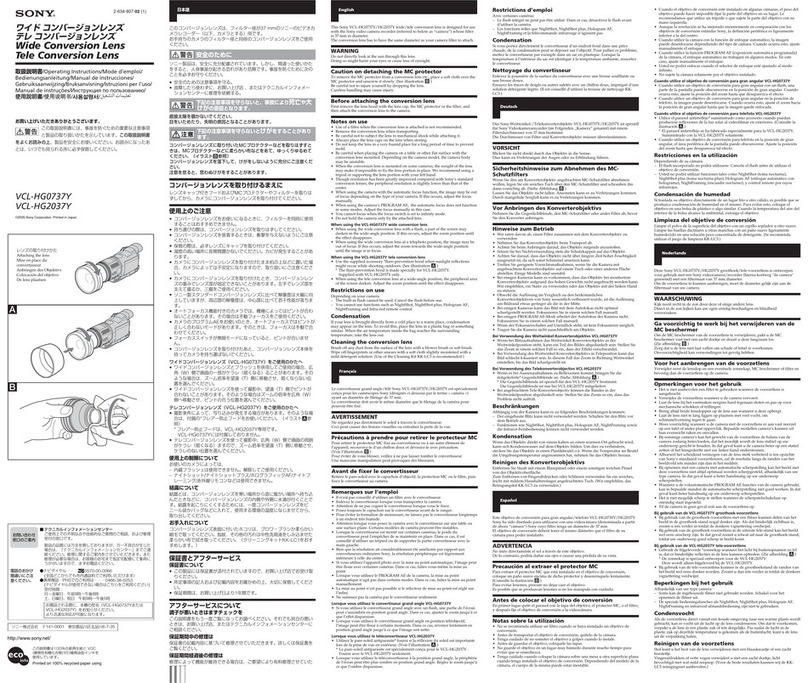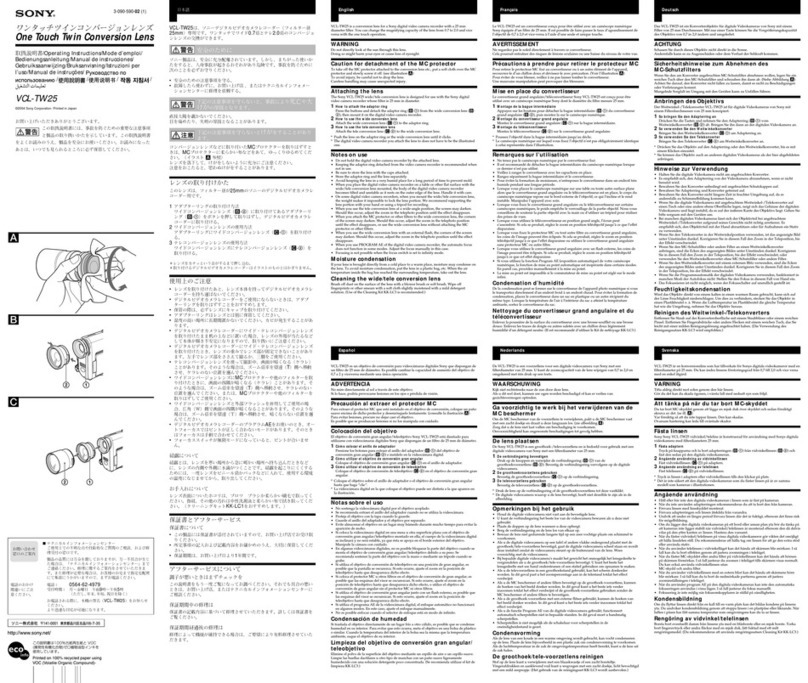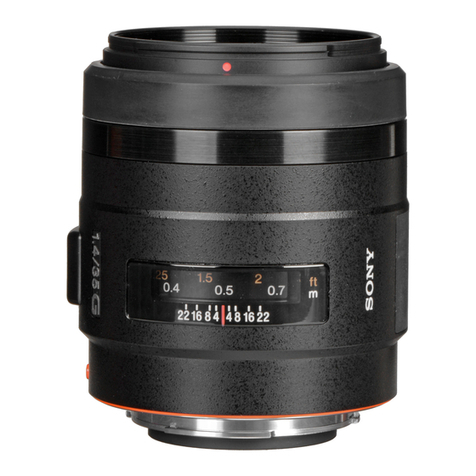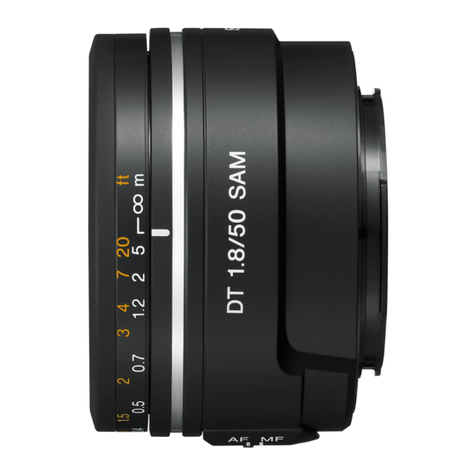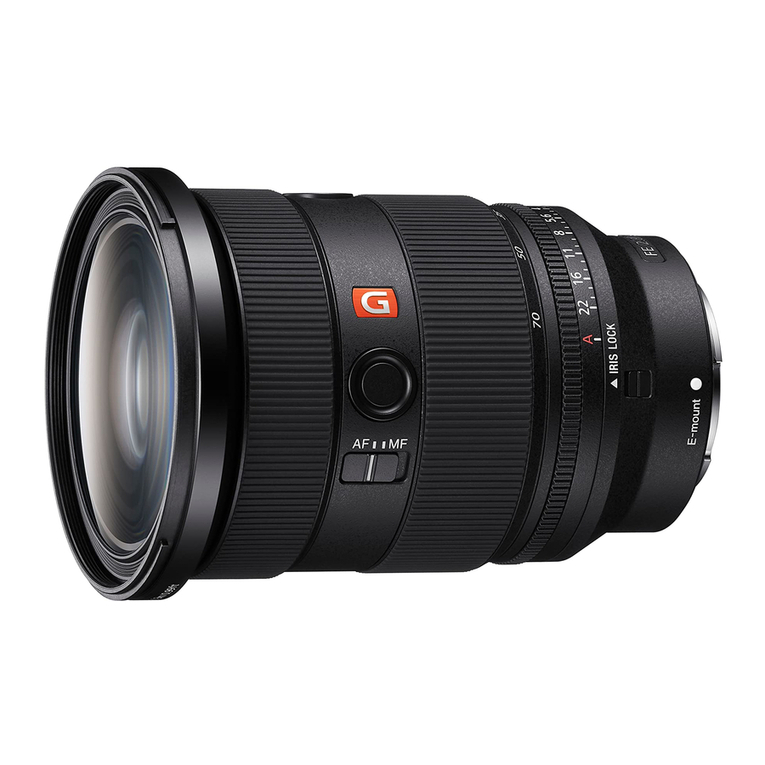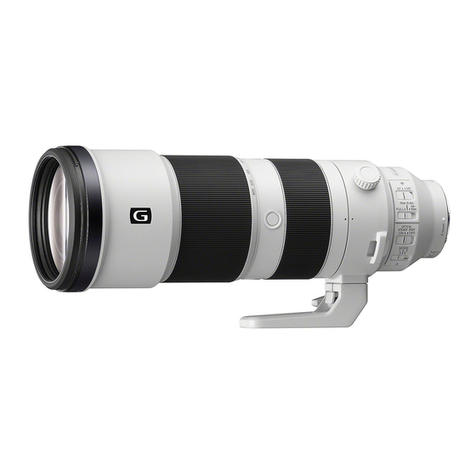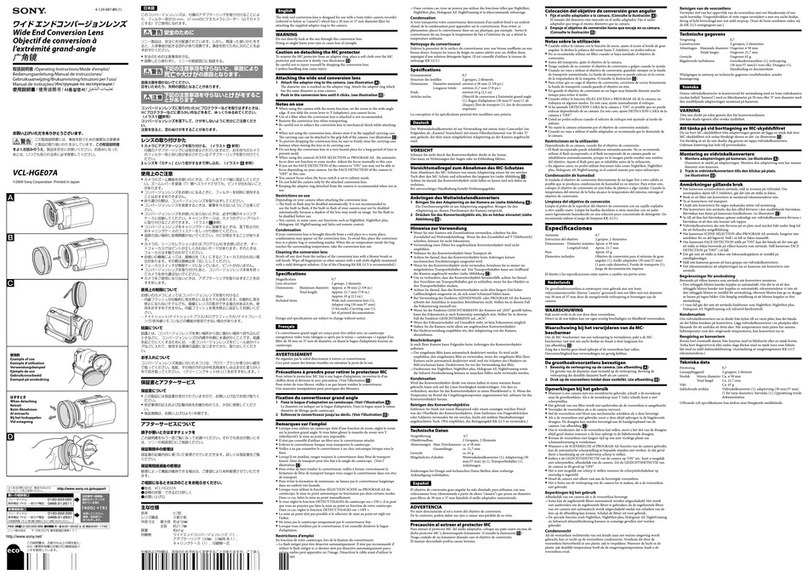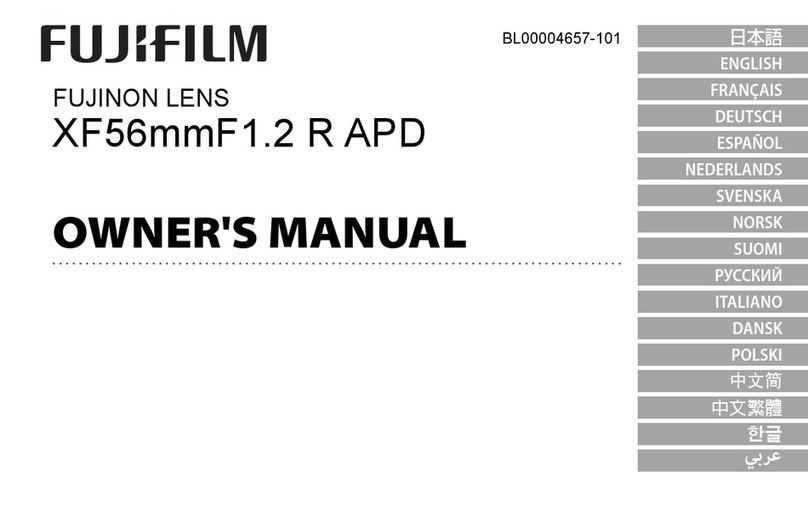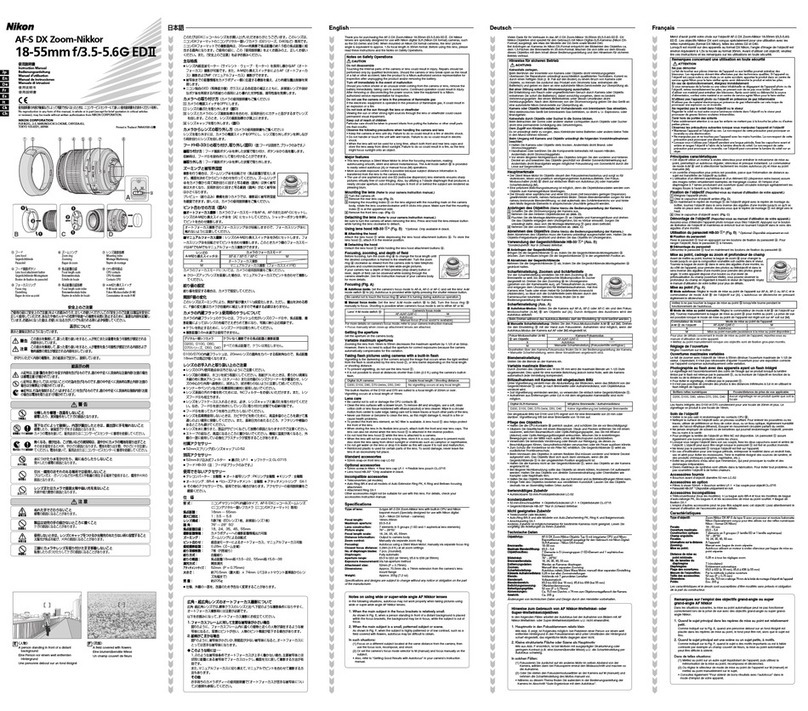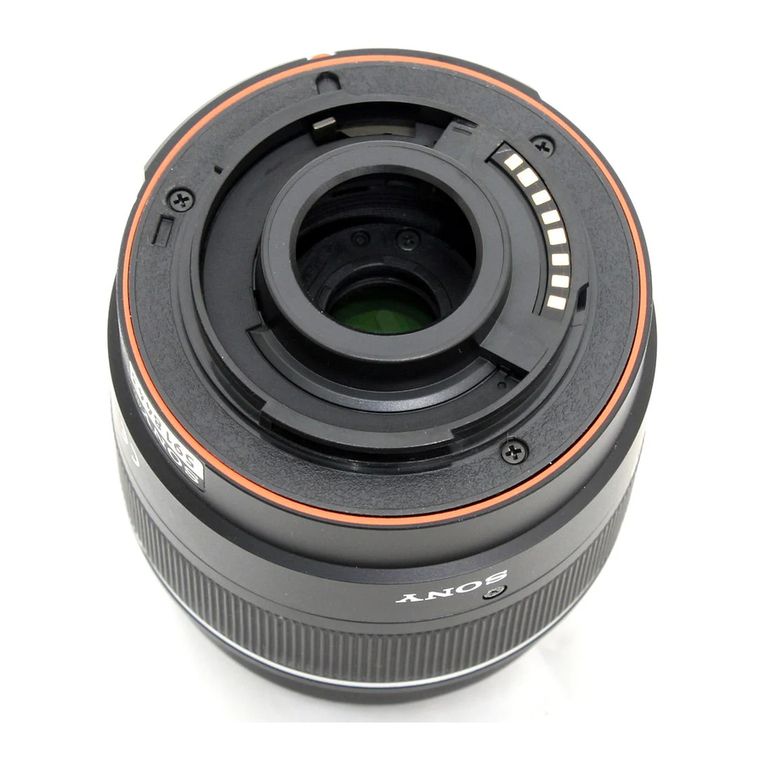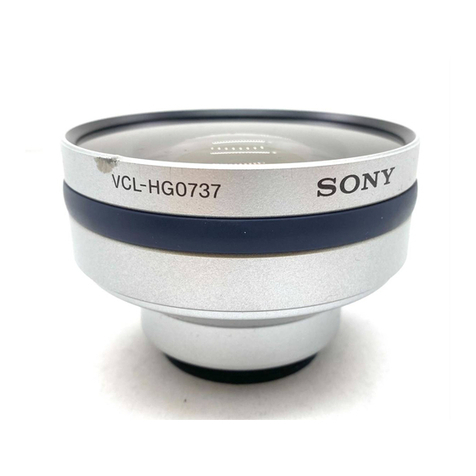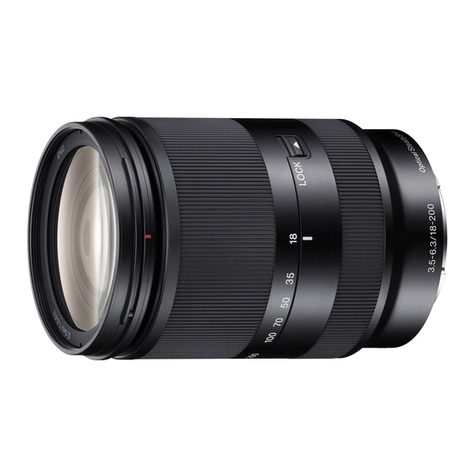
Switching focus range (AF range)
The focus-range limiter enables you to reduce the auto focusing time. This is
useful when the subject distance is definite. You can also set the desired focus
range and select it.
Slide the focus-range limiter to select the focus range.
FULL: The focus range is not limited. AF is set to the entire focus range.
- 6.4m: AF is set to 6.4 m (21 feet) to infinity.
SET: AF is set to the appointed focus range, both far and near positions.
To set the focus range
1Slide the focus-range limiter to SET.
2Focus the lens to the desired far or near distance.
The focusing distance can be set in any focus mode: AF, MF or DMF.
The far and near focusing distance can be set in either order.
3Slide the focus-range setting switch to FAR or NEAR for the
appropriate focus range position (depending on which position
you set first).
The focus-range setting switch automatically returns to the original
position.
If the audio-signal switch is set to ON, a beep will be heard when the focus
range is set.
The focus range to be set is effective until a new focus range is set.
Using prefocus
A specific subject distance can be stored and recalled at any time. With the
distance set, this is useful for catching fast-moving subjects, such as a moving
train, events at a sports festival, or horse and car races, etc.
To set the subject distance
1Slide the focus-hold/prefocus switch to PREFOCUS.
2Focus the lens on the distance to be set.
The focusing distance can be set in any focus mode: AF, MF or DMF.
3Press the focus preset button to store the subject distance.
The stored subject distance is effective until a new subject distance is set.
If the audio-signal switch is set to ON, a beep will be heard when the
subject distance is stored.
To recall the preset subject distance
1Slide the focus-hold/prefocus switch to PREFOCUS.
Set the focus hold button function to FOCUS HOLD for cameras with
custom function capability.
2Press the focus-hold button so that the lens will focus to the
prefocus position.
When AF is set, press and hold the focus-hold button while taking pictures.
If the focus-hold button is released, AF will be reactivated and the subject
focus distance will be changeable.
If the audio-signal switch is set to ON, a beep will be heard when the preset
subject distance is recalled.
Direct manual focus (DMF)
Even when AF is set, the setting is switched to MF automatically if you rotate
the focusing ring while pressing the shutter button halfway. This provides
quick fine adjustment of focusing (DMF). Select the mode for correct DMF
from the following. Set the DMF-mode switch to whichever you prefer.
Standard DMF (STD)
Rotate the focusing ring to set correct DMF when the focus is locked in AF-A
(automatic auto focus) or AF-S (single-shot auto focus). Using this mode is
recommended for normal subjects.
DMF is not available in AF-C (continuous auto focus), when out of focus, or
with continuous advance in AF-A after the second focus is confirmed.
Full-time DMF (F TIME)
In any AF mode (AF-A/S/C), rotate the focusing ring while pressing the
shutter button halfway to set correct DMF. This is useful to catch a fast-
moving subject.
Shooting at infinity in MF
The focusing ring can be rotated slightly past the infinity to provide accurate
focusing under various operating temperatures. Do not rotate the focusing
ring all the way to the end when focusing manually, even at infinity. Look
through the viewfinder, etc., and set the focus precisely.
Depth-of-field scale (See Exhibit Operating
Instructions-)
When focus is set on a subject, anything at that same distance will appear
sharp, and anything within a certain range before and beyond the subject will
also appear in focus; this is called depth of field. Depth of field depends on
the subject distance and aperture you choose and is indicated by the lines on
the depth-of-field scale corresponding to the aperture.
The depth-of-field scale and depth-of-field table are for 35mm-format cameras.
The depth-of-field is shallower when you use an Interchangeable Lens Digital
Camera equipped with an APS-C sized image sensor.
Using focus-hold buttons
This lens has 4 focus-hold buttons.
Press the focus-hold button in AF to cancel AF. The focus is fixed and you
can release the shutter on the fixed focus. Release the focus-hold button while
pressing the shutter button halfway to start AF again.
Set the focus-hold/prefocus switch to FOCUS HOLD and press the
focus-hold button.
The function of the focus-hold button can be changed on cameras with custom
function capability. Refer to the camera manuals for details.
Using the audio signal
The audio signal beeps when the focusing range is customized with the
focus-range setting switch or the prefocus distance is set or recalled with the
focus preset button.
Slide the audio-signal switch to BEEP ON to activate the signal.
To set the signal off, slide the audio-signal switch to OFF.
Changing the plug-in filters
A normal filter is equipped with your lens.
The filter is a part of optical system component. Be sure to attach either the
normal filter or the polarizing (circular) filter when taking pictures.
To change the plug-in filter
1Push down the filter-holder lock and turn it counterclockwise 90°
towards the lens front until the orange index is aligned with the
filter holder, and then lift the filter holder up.
2Align the filter-holder lock orange index with the filter holder,
face the side with the filter to the camera body, and then insert
the filter holder into the lens barrel.
When attaching the polarizing (circular) filter to the lens, make sure to
point the arrow tip of the filter holder to the lens front.
3Push down the filter-holder lock and turn it 90° clockwise to lock.
The filter-holder lock orange index is perpendicular to the holder.
To use the plug-in polarizing (circular) filter
1Adjust the focus precisely while looking through the viewfinder,
etc.
2Rotate the adjust ring on the plug-in polarizing (circular) filter
holder while looking through the viewfinder, etc., to adjust
degree of polarization for shooting.
The polarizing (circular) filter can reduce or eliminate unwanted reflections
(polarized light) from nonmetallic surfaces of water, glass, windows, shiny
plastics, ceramics, paper, etc. It can also filter out polarized light from
the atmosphere in general to produce richer colors. You can adjust the
polarizing degree to get good contrast when taking photos of blue sky.
Generally, reflected light (polarization) should be minimized in
photography, however you can adjust the polarizing degree for the desired
effect.
The amount of light reaching the image sensor decreases. If your camera is
set to manual exposure mode and you are using a commercially available
exposure meter, or if your camera is set to manual exposure mode and you
are using the Manual Flash Control function available on some external
flash units, adjust the exposure compensation by opening the aperture 1 or
2 stops to the + side.
